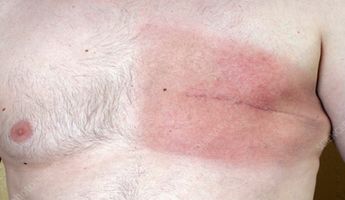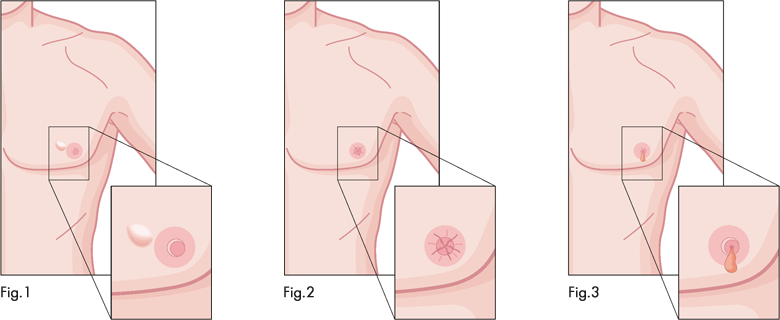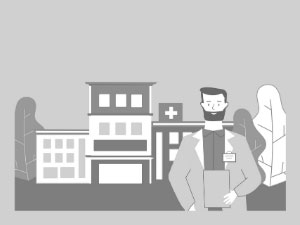Male Breast Cancer Treatment in Pakistan
Search and Compare the Best Clinics and Doctors at the Lowest Prices for Male Breast Cancer Treatment in Pakistan

Find the best clinics for Male Breast Cancer Treatment in Pakistan
No clinics available

- Home
- Pakistan
WHY US?
At Medijump, we're making medical easy. You can search, compare, discuss, and book your medical all in one place. We open the door to the best medical providers worldwide, saving you time and energy along the way, and it's all for FREE, no hidden fees, and no price markups guaranteed. So what are you waiting for?

Free

Best Price

Widest Selection

Risk-Free
What you need to know about Male Breast Cancer Treatment in Pakistan

There are different types of treatment for men with breast cancer. Because there have been few clinical treatments for male breast cancer, most doctors recommend the treatment options based on their experience of treating women with breast cancer.
To determine your treatment options, several important factors need to be considered. These include the stage of your cancer, how fast the cancer is growing, your overall health, and your preference. The treatment for male breast cancer often involves surgery and may be combined with other treatments. The five types of treatment used are surgery, chemotherapy, hormone therapy, radiation therapy, and targeted therapy.
What does the Procedure Involve?
Surgery
Surgery is usually the first treatment if a breast abnormality is found to be cancerous. It aims to remove the tumor, as well as some surrounding breast tissue. There are several types of surgery that can be performed:
-
Mastectomy – The most common type of mastectomy performed in men is called a modified radical mastectomy. This surgery involves removing the nipple, areola (the dark, round area around the nipple), and all of the breast tissue. Many of the lymph nodes under the arm, and sometimes, part of the chest wall muscles may be removed as well.
-
Lumpectomy – Also known as breast-conserving surgery, lumpectomy is a procedure to remove cancer but not the breast itself. It involves removing the tumor (lump) and a small amount of normal tissue that surrounds it. However, this type of surgery is rarely done because men’s breasts are very small. By the time the tissue and the surrounding tumor have been removed, very little breast tissue is left.
-
Sentinel lymph node biopsy – this type of surgery involves removing a few lymph nodes for testing. The lymph nodes are most likely to be the first place that cancer cells would spread. Your doctor will remove a few lymph nodes and analyze them. If no cancer cells are found, then there is a good chance that breast cancer has not spread. However, if cancer is found, additional lymph nodes will need to be removed for further testing.
Chemotherapy
Chemotherapy is a type of treatment that uses drugs to stop the growth of cancer cells, either by stopping the cells from dividing or by killing them. Chemotherapy drugs can be administered through a vein in your arm (intravenously) or taken by mouth in the form of a pill. Sometimes, both methods can be used. This type of treatment may be carried out after surgery to lower the risk of your breast cancer coming back. In men with advanced breast cancer or those with cancer that has spread to other areas of the body, chemotherapy may be the main treatment option.
Hormone therapy
Some types of breast cancer rely on certain hormones to grow (hormone receptor). With hormone therapy, the effects of these hormones are blocked. As a result, the growth of the cancer is stopped.
Hormone therapy for male breast cancer usually involves medication called tamoxifen. In some cases, the removal of the testes reduces the amount of certain male hormones in your body. Men who have breast cancer should never take testosterone as it causes the cancer cells to grow.
Radiation therapy
Radiation therapy is a type of treatment that uses high-energy beams, such as X-rays and protons, to kill or stop cancer cells from growing. Radiation therapy has two types:
-
Internal radiation therapy uses a radioactive substance that is sealed in seeds, wires, needles, or catheters that are placed near or directly into cancer.
-
External radiation therapy involves the use of a machine outside of the body. This machine sends radiation toward cancer.
Targeted therapy
Some men have an excess of a protein (HER2) that can make cancer spread quickly. In this case, your doctor will use drugs or substances to identify and attack specific cancer cells without harming normal cells. The drug may also boost your immune system, which gives it more strength to fight cancer.
How Long Should I Stay in Pakistan?
Your length of stay depends on the type of treatment you have. With surgery, you usually need to stay in the hospital for at least a day and stay in Pakistan for about 7 to 10 days. For chemotherapy, hormone therapy, radiation therapy, and targeted therapy, your length of stay can vary depending on your treatment schedule or treatment plan. Your doctor and/or medical travel team will be able to advise you on this.
What's the Recovery Time?
The recovery time for surgery can take around 4 to 6 weeks, but you should be able to return to work in 2 to 3 weeks following the surgery. Side effects after chemotherapy, radiation therapy, hormone therapy, and targeted therapy generally reduce within a few weeks to several months.
What About Aftercare?
After any type of treatment, your doctor will give you detailed aftercare instructions, what you should and foods to avoid, exercise your plan and restrictions. It is important that you follow the instructions closely. Remember, you will require regular checkups with your doctor for the rest of your life.
What's the Success Rate?
Male breast cancer treatment is safe and effective. However, the success rate depends on the stage of cancer and how fast the cancer is growing. All types of treatment carry possible risk and side effects, such as infection, bleeding, hematoma, nausea, vomiting, hair loss, and heart problems.
Are there Alternatives to Male Breast Cancer Treatment?
There are currently no other alternatives to the treatments mentioned above. Some men with breast cancer take part in a clinical trial. A treatment clinical trial is a research study used to obtain information on new treatments or help to improve current treatments for patients with cancer.
What Should You Expect Before and After the Procedure
Before male breast cancer treatment, you may experience uncomfortable symptoms and your cancer is likely to spread to other parts of the body. After successful male breast cancer treatment, most of the symptoms should be gone. You may also be incomplete remission (no evidence of disease or NED).
Whilst the information presented here has been accurately sourced and verified by a medical professional for its accuracy, it is still advised to consult with your doctor before pursuing a medical treatment at one of the listed medical providers
No Time?
Tell us what you're looking for and we'll reachout to the top clinics all at once
Enquire Now

Popular Procedures in Pakistan
Prices Start From $95

Prices Start From $53

Prices Start From $2

Prices Start From $692

Recommended Medical Centers in Pakistan for procedures similar to Male Breast Cancer Treatment

- Interpreter services
- Translation service
- Religious facilities
- Medical records transfer
- Medical travel insurance
- Health insurance coordination
- TV in the room
- Safe in the room
- Phone in the room
- Private rooms for patients available

- Interpreter services
- Translation service
- Religious facilities
- Medical records transfer
- Medical travel insurance
- Health insurance coordination
- TV in the room
- Safe in the room
- Phone in the room
- Private rooms for patients available

- Interpreter services
- Translation service
- Religious facilities
- Medical records transfer
- Medical travel insurance
- Health insurance coordination
- TV in the room
- Safe in the room
- Phone in the room
- Private rooms for patients available

- Interpreter services
- Translation service
- Religious facilities
- Medical records transfer
- Medical travel insurance
- Health insurance coordination
- TV in the room
- Safe in the room
- Phone in the room
- Private rooms for patients available

- Interpreter services
- Translation service
- Religious facilities
- Medical records transfer
- Medical travel insurance
- Health insurance coordination
- TV in the room
- Safe in the room
- Phone in the room
- Private rooms for patients available

- Interpreter services
- Translation service
- Religious facilities
- Medical records transfer
- Medical travel insurance
- Health insurance coordination
- TV in the room
- Safe in the room
- Phone in the room
- Private rooms for patients available

- Interpreter services
- Translation service
- Religious facilities
- Medical records transfer
- Medical travel insurance
- Health insurance coordination
- TV in the room
- Safe in the room
- Phone in the room
- Private rooms for patients available

- Interpreter services
- Translation service
- Religious facilities
- Medical records transfer
- Medical travel insurance
- Health insurance coordination
- TV in the room
- Safe in the room
- Phone in the room
- Private rooms for patients available

- Interpreter services
- Translation service
- Religious facilities
- Medical records transfer
- Medical travel insurance
- Health insurance coordination
- TV in the room
- Safe in the room
- Phone in the room
- Private rooms for patients available

- Interpreter services
- Translation service
- Religious facilities
- Medical records transfer
- Medical travel insurance
- Health insurance coordination
- TV in the room
- Safe in the room
- Phone in the room
- Private rooms for patients available
Male Breast Cancer Treatment in and around Pakistan
Introduction
The Islamic Republic of Pakistan is a country located in South Asia and it is the fifth-most populous country of the world, with a population exceeding 207.8 million. Although the country has plenty of natural and historical riches, this country is off the radar for most tourists due to political instability. Those who are curious enough to visit the country will find that it is filled with beautiful, from Mughals and mountains to the mighty Karakoram.
A large number of ultra-modern medical centers are available, and they are equipped and facilitated with the most advanced medical technologies. Numerous doctors and surgeons at these medical centers are normally foreign qualified. Large numbers of patients from neighboring countries and the Middle East have traveled to Pakistan to undergo various medical procedures, mainly for organ transplants or fertility treatments.
Popular Cities and Regions in Pakistan
The capital city of Pakistan is Islamabad. This city was built as a planned city to replace Karachi as the country’s capital. Islamabad is known for its safety, high standards of living, and plenty of green spaces. Here, tourists can admire the symmetry of the Pakistan Monument, check out the Daman-e-Koh viewpoint, visit the Lok Virsa Museum, and stroll around the Faisal Mosque. Karachi, the original capital of the country, is a sprawling metropolis. Most visitors usually come to check out the Quaid Mausoleum and the Tuba Mosque. Another popular city for tourism in Lahore, which is filled with beautiful architecture and interesting museums. The most popular attractions in this city are the Badshahi Mosque, the Lahore Fort, the Sheesh Mahal, and the Delhi Gate.
Transport in Pakistan
The busiest airport in Pakistan is the Jinnah International Airport, which is located in Karachi. It serves both domestic and international flights to and from several cities in Europe, Asia, and the Middle East. Taking domestic flights can be a great way to travel around. The rail network is also extensive and comfortable. Taxis and Uber are also available.
Visas in Pakistan
Citizens of 5 countries, including Maldives, Nepal, Samoa, Tonga, and Trinidad and Tobago, can visit Pakistan without a visa. Several countries, such as Austria and the UAE, may obtain a visa on arrival if they possess ETA. Citizens of 15 countries, including Armenia and India, are eligible to apply for an online visa.
Weather in Pakistan
Summer (March – October) is hot and dry in the northern regions. However, July and August can be rainy, making the weather hot and humid. The temperatures can range from 9°C to 38°C. Winter (November – April) can be really severe and most cities will get frost. Also, the northern part of the country experiences heavy rainfall during this season. The average temperature ranges from 3°C to 25°C.
Additional Info
- Local Currency: The official currency is the Pakistani rupee (PKR). 1 USD will get you approx. 154.4 PKR.
- Money & Payments: ATMs are readily available. Pakistan is a cash-based society, and credit cards are only accepted in a few establishments. Tipping is not expected.
- Local Language: The official language is Urdu and English. Punjabi, Pashto, Sindhi, Saraiki, and Balochi are also spoken by a number of people.
- Local Culture and Religion: Islam is practiced by more than 90% of the population. Hinduism, Christianity, Ahmadis, Sikhism, and other religions are also practiced. Always avoid wearing body-revealing clothes in public places.
- Public holidays: Some of the most celebrated holidays are Holi, Pakistan Day, Eid ul-Fitr, and Eid ul-Azha.
Popular Searches
- Plastic Surgery in Thailand
- Dental Implants in Thailand
- Hair Transplant in Thailand
- Breast Augmentation Thailand
- Gastric Sleeve in Thailand
- Gender Reassignment Surgery in Thailand
- Laser Hair Removal in Bangkok
- Botox in Bangkok
- Dermatology in Bangkok
- Breast Augmentation in Bangkok
- Coolsculpting in Bangkok
- Veneers in Turkey
- Hair Transplant in Turkey
- Rhinoplasty in Turkey
- Stem Cell Therapy in Mexico
- Rhinoplasty in Mexico
- Liposuction in Mexico
- Coolsculpting in Tijuana
- Rhinoplasty in Korea
- Scar Removal in Korea
- Gastric Sleeve in Turkey
- Bone Marrow Transplant in India
- Invisalign in Malaysia
- Plastic Surgery in the Dominican Republic
- Tummy Tuck in the Dominican Republic
- Plastic and Cosmetic Surgery in Poland
- Rhinoplasty in Poland
- Hair Implant in Poland
- Dental Implants in Poland
- IVF in Turkey